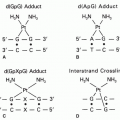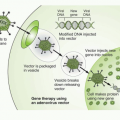Arsenic Trioxide
Bruce A. Chabner
A remarkable addition to the treatment for acute promyelocytic leukemia (APL) emanated from investigators in Harbin, China, who reported that the majority of patients relapsing and/or refractory to standard ATRA/anthracycline regimens achieved complete response to a single agent arsenic trioxide (ATO).1 Arsenicals have been used in folk medicine for various conditions, including warts, syphilis, ulcers, and leukemia. Several forms of arsenic derivatives have been administered to patients, but white arsenic (arsenic trioxide), which forms arsenous acid (AS(OH)3) in aqueous solution, is easily formulated for intravenous administration and is well absorbed orally2 (see Fig. 23-1). Its key features are shown in Table 24-1.
Mechanism of Action
ATO enters cells via the AQP9 transporter,3 which is expressed at higher levels in APL and in the M2 AML subtype, as compared to other subtypes of AML. As a general property of arsenicals, ATO readily interacts with sulfhydryl and other reducing molecules.4 It inactivates the critical enzyme thioredoxin reductase, thereby disabling cellular defenses against reactive oxygen species (ROS).5 APL cells have a generous intracellular concentration of ROS, probably as the result of their intracellular NADPH oxidase activity,6 and are particularly susceptible to redox inactivation. Consistent with the free radical mechanism of toxicity is the observation that the antitumor effects of ATO are antagonized in cell culture by free radical scavengers, such as N-acetylcysteine.7
TABLE 24.1 Key features of ATO | ||||||||||||||||||
|---|---|---|---|---|---|---|---|---|---|---|---|---|---|---|---|---|---|---|
|
ATO has a number of additional biological effects that may contribute to its cytotoxicity. It activates the intrinsic apoptotic pathway that responds to ROS and down-regulates antiapoptotic proteins such as bcl-2 and dampens survival and angiogenic signals.8




Stay updated, free articles. Join our Telegram channel

Full access? Get Clinical Tree








